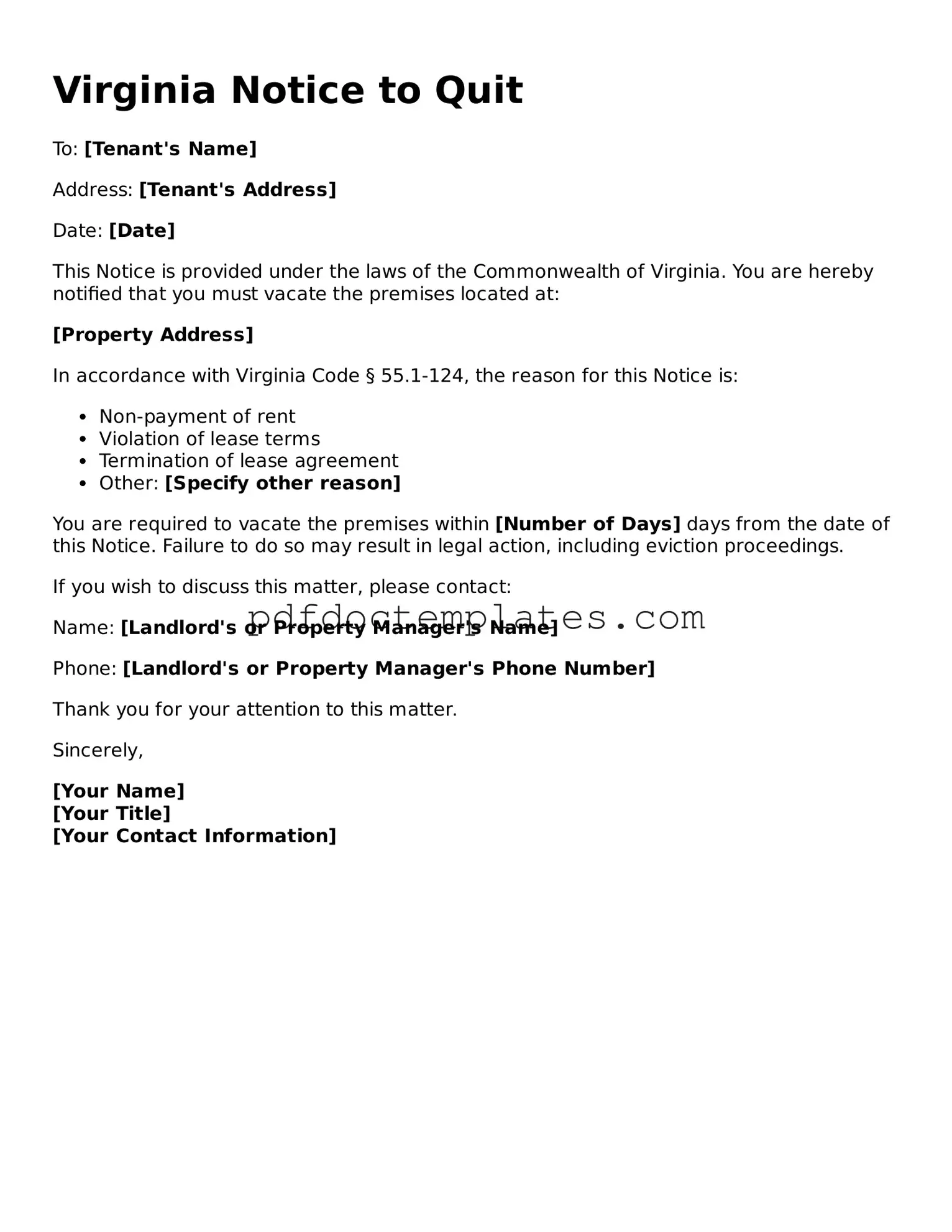Blank Notice to Quit Document for Virginia
The Virginia Notice to Quit form is a legal document that a landlord uses to notify a tenant of the need to vacate the rental property. This notice typically outlines the reasons for the eviction and provides a specific timeframe for the tenant to leave. Understanding this form is crucial for both landlords and tenants to ensure compliance with Virginia's rental laws.
To fill out the Virginia Notice to Quit form, please click the button below.
Access Your Document
